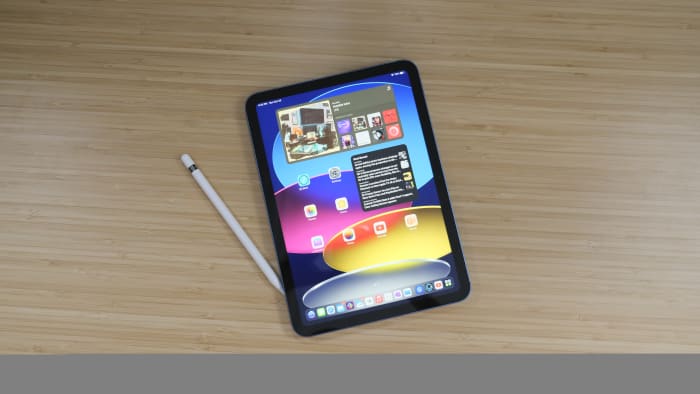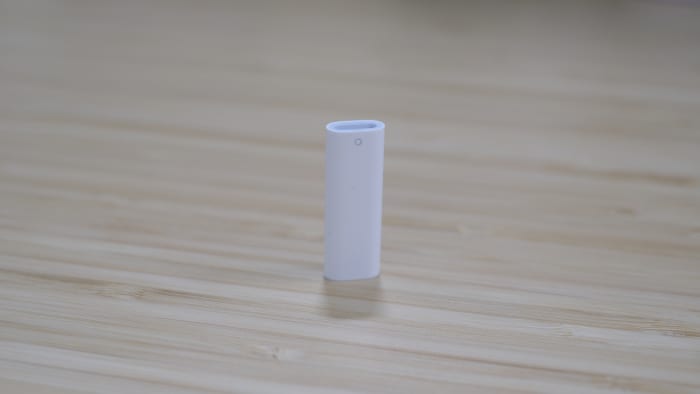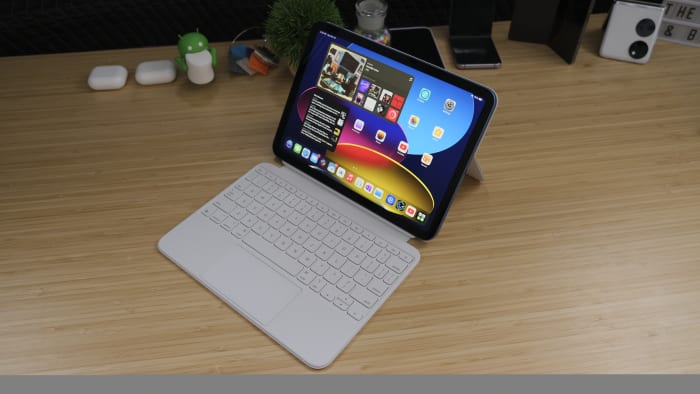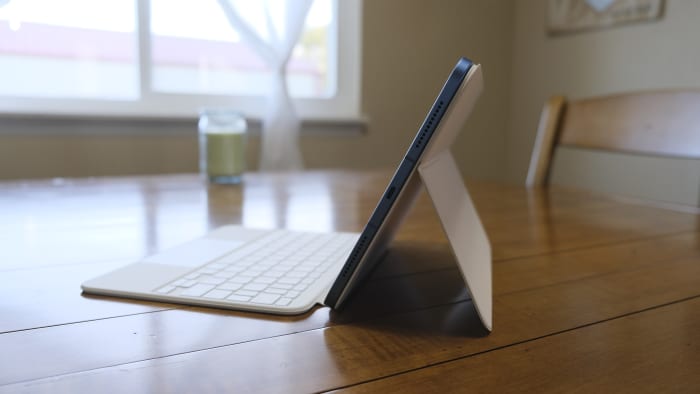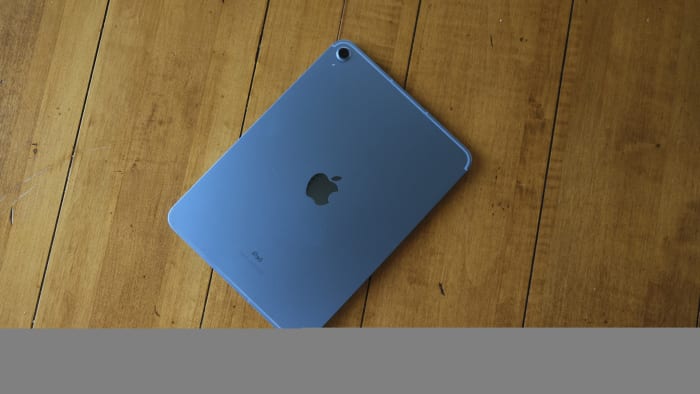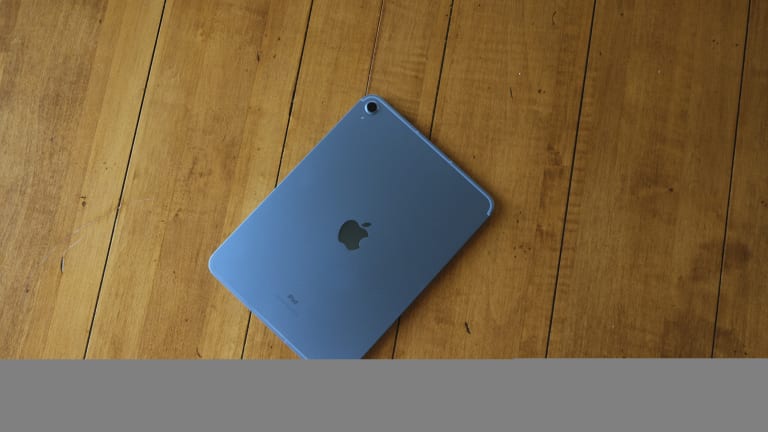
The Newest iPad Reminded Me Of Just How Good Apple’s Tablets Are — Here's Why
Sports Illustrated aims to feature only the best products and services. If you buy something via one of our links, we may earn a commission.
Apple unveiled the latest iPad without a fancy event or much fanfare. Instead, the tablet was announced via a press release and was immediately made available for preorder, with the official launch starting Wednesday, October 26.
The new iPad borrows the same design we’ve seen Apple use on more expensive models and has made the jump to USB-C, but that comes at the cost of a price hike. Instead of Apple’s staple $329 price point for the entry-level tablet, the iPad now starts at $449. To be clear, the ninth-generation iPad is still be available to buy, keeping that $329 starting price intact.
iPad users have never had more options when it comes to Apple’s tablet, and a case can be made either way about whether or not that’s a good thing.
Read on to learn everything there is to know about Apple’s latest iPad, whether you’re in the market to upgrade your iPad, or you’re ready to pick up your first tablet. There’s a lot to cover, so let’s dive in.
10th Gen iPad Pros And Cons
Pros | Cons |
New design with fun colors | First generation Apple Pencil is confusing |
Solid performance | Price increase |
Long battery life |
A Trickle-Down Design
The 2022 iPad is the recipient of years of design changes and tweaks that appeared on higher-end models like the Air or Pro. Apple first ditched the home button, debuting a design with flat sides and a USB-C port with the 2018 iPad Pro. Without a home button and the Touch ID sensor that’s used to recognize fingerprints to unlock the tablet or sign into apps that it brought with it, Apple moved the biometric sensor to the top button of the 2022 iPad Air.
And now, all of those features are in use with the standard iPad, complete with color options of blue, silver, pink and yellow. Apple sent me a blue review sample and I think it looks great, however, if I was buying an iPad for myself, I’d definitely pick up the yellow option. It just looks fun.
The 10.9-inch Liquid Retina display matches the display size of the current iPad Air and looks better than last year’s iPad.
There is one feature that’s making its debut on the iPad and is sure to leave iPad Air and iPad Pro users feeling a tinge of jealousy. Instead of keeping the front-facing camera in its traditional spot, located on the left-hand side of the iPad’s screen when using the tablet in landscape orientation, the front-facing camera is now centered above the display.
By moving the landscape 12-megapixel ultra-wide camera to the middle of the tablet, it’s far easier to stay in the middle of the video feed that’s fed into video calls, be it on FaceTime or Zoom.
I’ve used the iPad for a handful of video calls in the last few days and I can say that I vastly prefer the camera’s new location, simply because it’s a more natural-looking placement. Most of us are accustomed to seeing ourselves centered in our video feed thanks to our laptop’s webcams, and now owners of the new iPad will have that same experience.
Bolstering the front-facing camera’s chops as an ideal video call setup is Center Stage, a feature that moves the camera feed to follow you as you move around, zooming in on you if someone leaves the shot, or zooming out to include more of the room when another person is detected.
The bottom of the iPad is where you’ll find a USB-C port instead of Apple’s proprietary Lightning connector for charging the iPad and transferring files at USB 2.0 speeds. The switch to USB-C was inevitable, and honestly, I’m surprised it took Apple this long to make the change on its standard iPad.
Inside the iPad’s box is a 20W wall adapter and a USB-C to USB-C cable. In my testing with a more powerful wall adapter, I did see the iPad draw just under 30W of power at times, so you might want to pick up a faster wall adapter to ensure you’re getting the fastest charging speeds.
When the iPad is in landscape orientation, the top edge is where you’ll find the volume up and down buttons. On the left edge is where the Touch ID sensor is now located, pulling double duty as the sleep/wake and power button.
Even though the sensor is narrow and long, I rarely have issues with it recognizing my fingerprint and unlocking the tablet or signing me into an app. The biggest adjustment for me personally is remembering to just rest a registered finger on the button to wake and unlock the tablet.
For the first day or two, I would press the button which often led to the iPad unlocking and starting to show the home screen, but then instantly lock. It’s a comical dance the first couple of times, but then after that, it’s super annoying. So, if you end up with a new iPad remember this—rest your finger on the button until it unlocks and you see your home screen. Don’t press it!
Let’s Talk About The Apple Pencil Situation
Even though the iPad now boasts nearly the same design as the iPad Air, iPad Mini and iPad Pro, Apple made the decision to stick with the original Apple Pencil for the iPad, and not add support for the second-generation Apple Pencil to its newest tablet.
My current theory, as well as many others, is that Apple had to make a decision between using the second-generation Apple Pencil or moving the front-facing camera. Why? Because the newest Apple Pencil magnetically attaches to the side of the iPad’s housing. And when it’s attached, it wirelessly charges. That side of the iPad’s housing is the same spot where the new front-facing camera is found.
There’s simply not enough room in the iPad’s housing for both camera hardware and the Apple Pencil hardware to coexist. So, Apple prioritized the front-facing camera and retained first-generation Apple Pencil support.
And, honestly, the experience between the two Apple Pencil models, while different, is similar enough that only an avid artist or someone who writes a lot of notes on the iPad would notice. Personally, I don’t use the Apple Pencil all that often. Although, I’ve started to take meeting notes in Microsoft’s OneNote app, and despite the design difference between the two Apple Pencils, with the second-generation model having a flat edge on one side, I didn’t really notice a difference in the experience.
However, there’s a small problem. The first generation Apple Pencil launched in 2015, and has a Lighting connector under the cap on the non-business end for first-time pairing and charging. With previous iPad models, that wasn’t an issue because you could remove the cap, plug the Pencil directly into the tablet, and think nothing about it.
Now that the iPad uses USB-C, though, you can’t directly connect the Apple Pencil to the iPad. Instead, you’ll need to buy a $9 USB-C to Apple Pencil adapter if you already own an Apple Pencil. The adapter will be included in the box for the $99 Apple Pencil.
The adapter and Apple Pencil orders won’t ship until the first week of November, and that date keeps moving further back, complicating the entire situation even more.
I can say that I have already misplaced the adapter a couple of times, and I’ve only had the iPad for a few days. The Apple Pencil’s battery lasts for 12 hours of use, so it’s not like you’ll need it every single day—unless it’s a really old Apple Pencil, in that case, the battery life isn’t going to be what it should be.
Maybe the decision to stick with the first-generation Apple Pencil was Apple just playing nice so that those upgrading from an older iPad didn’t have to buy a new Apple Pencil; especially when you consider the education industry and the number of iPads and Apple Pencils already in use there.
A Semi-Pro Experience
The Apple Pencil and the conundrum it brings with it isn’t the only productivity accessory the iPad supports. Alongside the iPad, Apple unveiled the $249 Magic Keyboard Folio for the iPad. Made of two pieces, the keyboard with trackpad portion magnetically connects to the iPad’s Smart Connector on the bottom edge of the housing. And there’s a back cover that also houses a kickstand that folds out, also connects to the iPad using magnets.
Because the keyboard uses the Smart Connector, there isn’t a battery in the keyboard, making it light and thin, and best of all, you don’t have to worry about charging it.
The keyboard isn’t too cramped to type on, as is often the case with keyboards made for devices with smaller displays. And Apple managed to fit a function row of keys for routine tasks like adjusting volume, media playback, multitasking and locking the tablet. The keyboards Apple currently makes for the iPad Air and iPad Pro lack a row of function keys, even though Pro users have been asking Apple for one since its release.
When using the iPad with the Magic Keyboard Folio, the overall experience feels very much like the iPad Pro. Indeed, the iPad doesn’t support the fancy Stage Manager multitasking features that the iPad Pro and iPad Air are receiving with the launch of iPadOS 16.1, but you can still use three apps at the same time on the iPad’s screen and the A14 Bionic processor doesn’t skip a beat.
A lot of my use included starting a YouTube video, and then minimizing the app to trigger picture-in-picture mode. I’d then open Safari on one side of the screen, and have Tweetbot open on the other half of the screen, while I’d slide an app like Messages or Slack on and off the screen. There were a few occasions during testing when I marveled at just how much you can get done on the iPad, forgoing the need for a faster and more expensive iPad Air or iPad Pro.
My favorite part about the Magic Keyboard Folio is the back cover with the fold-out kickstand. I found myself frequently removing the keyboard and using the iPad like a tablet, instead of leaving it connected to the keyboard. It was a liberating experience.
Apple claims up to 10-hour battery life with constant web browsing or watching videos. I found that to be accurate, as is often the case with iPad battery life estimates. I’ve had to charge the iPad just about every other day.
At one point, I connected an Xbox Controller to the iPad, launched Xbox Cloud gaming, and played a match of Fortnite. Over the next 20 minutes or so, I saw the iPad’s battery go from 100% down to 95%, while I secured a Victory Royale — my first on an iPad.
One aspect of the $449 iPad model I’m not a big fan of is its 64GB of storage. The review sample I received is the $599 256GB version, and after a quick check, I can see that I’ve already used 87.4 GB — just from installing the basic suite of apps and services I use on a daily basis.
I wish Apple would have doubled the base model storage to 128GB for $449; I imagine I’m not alone in filling up 64GB of storage without much effort.
Bottom Line: Is The 10th Gen iPad Worth it?
Apple’s iPad lineup has never looked better, thanks in part to the tenth-generation iPad and all of its fancy new colors. At the same time, the tablet lineup has never been more crowded, and as a byproduct of that—confusing. Price points range from $329 to $1,099 for the ninth-generation iPad all the way up to the 12.9-inch iPad Pro, respectively.
At $449, this year’s iPad delivers an exceptional tablet experience, just like we’ve come to expect from Apple with every update and release. But its price is high enough it could persuade those who are upgrading from an older tablet or buying their first iPad to spend a little bit more for the $599 iPad Air with a faster processor, improved display and second-generation Apple Pencil support.
So who is the new iPad for? Great question. I still haven’t fully figured that out, but I can say this: I’ve thoroughly enjoyed using the tenth-generation iPad over the last few days. From a great-looking display and solid performance to excellent battery life and the new Magic Keyboard Folio that turns it into the perfect device for students or an inbox-triaging machine for everyone else, there’s a lot to love.
Prices are accurate and items in stock at time of publishing.
